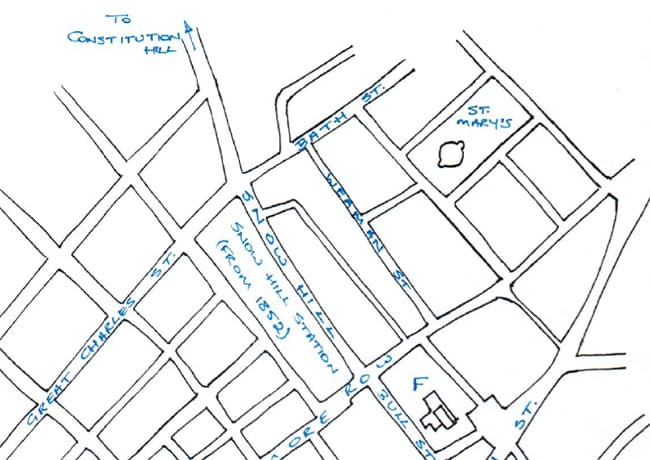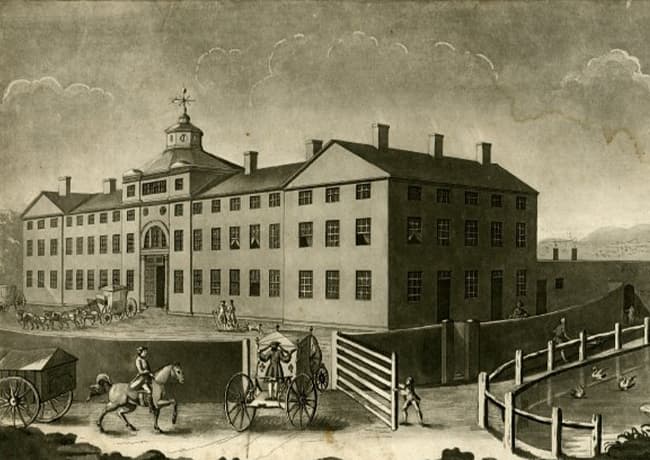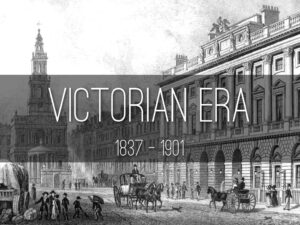 19th Century: The Summer Lane Area, BirminghamKnown for Back-to-Back Houses, Workshops, and Manufactories
19th Century: The Summer Lane Area, BirminghamKnown for Back-to-Back Houses, Workshops, and Manufactories 19th Century: Soho Manufactory, HandsworthSoho Manufactory: One of the Largest Manufactories in Europe
19th Century: Soho Manufactory, HandsworthSoho Manufactory: One of the Largest Manufactories in Europe The Victorian era in the United Kingdom describes the period from 1837-1901 when Queen Victoria was on the throne. It was a time of rapid change and thanks to the Industrial Revolution saw the country evolve from a largely rural environment to an urban, industrialised one. Almost every aspect of life changed over the course of these sixty years including politics, attitudes to women, health, science and manufacturing.
The Victorian era in the United Kingdom describes the period from 1837-1901 when Queen Victoria was on the throne. It was a time of rapid change and thanks to the Industrial Revolution saw the country evolve from a largely rural environment to an urban, industrialised one. Almost every aspect of life changed over the course of these sixty years including politics, attitudes to women, health, science and manufacturing.
When Queen Victoria ascended the throne, the Prime Minister in the United Kingdom was the Whig, William Lamb, the 2nd Viscount Melbourne. The Whigs were a political party that preceded the Liberal party. By the first half of the 19th century, their political programme included the supremacy of parliament over the monarch, support for free trade, Catholic emancipation, the abolition of slavery and expansion of votes for men.
The opposition party at the time was the Tories. Their main aims were to support the Stuart royal family’s claim to the throne, the established Church of England and the landed gentry.
Prior to 1882, once a woman married, in the eyes of the law she ceased to exist. On her wedding day, she became one person with her husband and thereafter everything she did was under his direction.
As soon as they married, her property and any money she owned transferred to her husband. Children were also his property. In the event of divorce, prior to 1839, the man could expect custody of his children.
The situation improved gradually over the century although undoubtedly they lived in a world that discriminated heavily against them.
An act of parliament in 1870 allowed women to keep any earnings or property they acquired after they married. By 1873, if a woman divorced, she could retain custody of any children up to the age of sixteen and by 1882 women were finally allowed to retain what they owned at the time of marriage.
Despite these victories, men considered themselves the dominant sex. Due to their superior physical strength, they sought to keep women subdued for as long as they could.
The medicine we take for granted in the 21st century could not have been conceived in the Victorian era, such was the infancy of medical science.
New medicines that were seen as miracle cures for a variety of ailments included things such as opiates and cocaine. Such were their benefits, they were used widely to treat everything from toothache and coughs to diarrhoea and insomnia. The negative effects of prolonged use were initially unknown. It wasn’t until the 20th century that their use became controlled.
The industrial revolution undoubtedly changed life in the Victorian era. Technological advances in the development of machines and steam engines lead to an increase in mass production and improved productivity. The building of railways, canals and roads meant that raw materials and goods could be transported more quickly and cheaply than ever before.
Living standards were said to have improved due to an increase in wages although, by the end of the 19th century, towns were becoming so overcrowded that many families lived in squalor. Chronic hunger and malnutrition were common for many, a situation that didn’t improve until the end of the century.
 19th Century: The Summer Lane Area, BirminghamKnown for Back-to-Back Houses, Workshops, and Manufactories
19th Century: The Summer Lane Area, BirminghamKnown for Back-to-Back Houses, Workshops, and Manufactories 19th Century: Soho Manufactory, HandsworthSoho Manufactory: One of the Largest Manufactories in Europe
19th Century: Soho Manufactory, HandsworthSoho Manufactory: One of the Largest Manufactories in EuropeVL McBeath’s books are available at Amazon US, Amazon UK, Amazon Canada, Amazon Australia and other Amazon stores.
or
Read with Kindle Unlimited (Click for two months FREE membership)